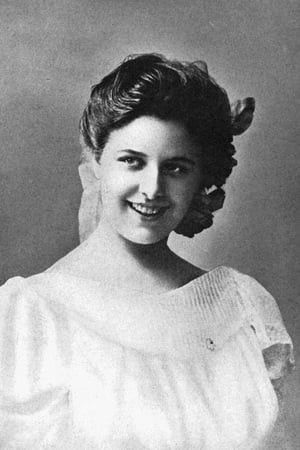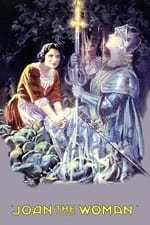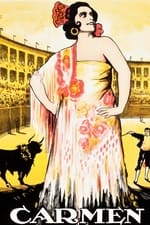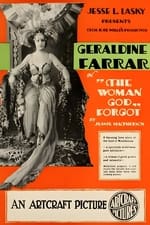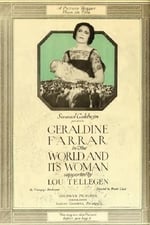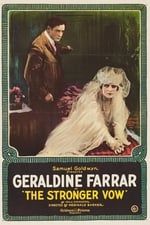Información personal
Conocido por Interpretación
Créditos conocidos 13
Sexo Femenino
Fecha de nacimiento 28 de febrero de 1882
Fecha de defunción 11 de marzo de 1967 (85 años)
Lugar de nacimiento Melrose, Massachusetts, USA
También conocido como
- Alice Geraldine Farrar
- Gerry Farrar
Puntuación del contenido
100
¡Sí! ¡Buena pinta!
Iniciar sesión para informar de un problema
Biografía
From Wikipedia, the free encyclopedia
Alice Geraldine Farrar (February 28, 1882 – March 11, 1967) was an American soprano opera singer and film actress, noted for her beauty, acting ability, and "the intimate timbre of her voice." She had a large following among young women, who were nicknamed "Gerry-flappers".
Farrar began studying music at age 5 in Boston and by 14 was giving recitals. Later she studied voice in New York City, Paris, and finally in Berlin. Farrar created a sensation at the Berlin Hofoper with her debut as Marguerite in Charles Gounod's Faust in 1901 and remained with the company for three years, during which time she continued her studies. She appeared in the title roles of Ambroise Thomas' Mignon and Jules Massenet's Manon, as well as Juliette in Gounod's Roméo et Juliette.
After three years with the Monte Carlo Opera, she made her debut at the New York Metropolitan Opera in Romeo et Juliette in 1906. She appeared in the first Met performance of Giacomo Puccini's Madama Butterfly in 1907 and remained a member of the company until her retirement in 1922, singing 29 roles there in 672 performances. Farrar created the title roles in Pietro Mascagni's Amica (Monte Carlo, 1905), Puccini's Suor Angelica (New York City, 1918), Umberto Giordano's Madame Sans-Gêne (New York, 1915), as well as the Goosegirl in Engelbert Humperdinck's Königskinder (New York, 1910).
She recorded extensively for the Victor Talking Machine Company and was often featured prominently in that firm's advertisements. She was one of the first performers to make a radio broadcast in a 1907 publicity event singing over Lee De Forest's experimental AM radio transmitter in New York City. She also appeared in silent movies, which were filmed between opera seasons. Farrar starred in more than a dozen films from 1915 to 1920, including Cecil B. De Mille's 1915 adaptation of Georges Bizet's opera Carmen, for which she was extensively praised. One of her other notable screen roles was as Joan of Arc in the 1917 film Joan the Woman.
Farrar retired from opera in 1922 at the age of 40. Her final performance was as Leoncavallo's Zazà. By this stage, her voice was in premature decline due to overwork.
Farrar quickly transitioned into concert recitals. She continued to make recordings and give recitals throughout the 1920s. Her autobiography, Such Sweet Compulsion, was published in 1938.
In 1960 Farrar was awarded two stars on the Hollywood Walk of Fame in the music and film categories, located at 1620 and 1709 Vine Street.
She died, aged 85, in Ridgefield, Connecticut in 1967.
From Wikipedia, the free encyclopedia
Alice Geraldine Farrar (February 28, 1882 – March 11, 1967) was an American soprano opera singer and film actress, noted for her beauty, acting ability, and "the intimate timbre of her voice." She had a large following among young women, who were nicknamed "Gerry-flappers".
Farrar began studying music at age 5 in Boston and by 14 was giving recitals. Later she studied voice in New York City, Paris, and finally in Berlin. Farrar created a sensation at the Berlin Hofoper with her debut as Marguerite in Charles Gounod's Faust in 1901 and remained with the company for three years, during which time she continued her studies. She appeared in the title roles of Ambroise Thomas' Mignon and Jules Massenet's Manon, as well as Juliette in Gounod's Roméo et Juliette.
After three years with the Monte Carlo Opera, she made her debut at the New York Metropolitan Opera in Romeo et Juliette in 1906. She appeared in the first Met performance of Giacomo Puccini's Madama Butterfly in 1907 and remained a member of the company until her retirement in 1922, singing 29 roles there in 672 performances. Farrar created the title roles in Pietro Mascagni's Amica (Monte Carlo, 1905), Puccini's Suor Angelica (New York City, 1918), Umberto Giordano's Madame Sans-Gêne (New York, 1915), as well as the Goosegirl in Engelbert Humperdinck's Königskinder (New York, 1910).
She recorded extensively for the Victor Talking Machine Company and was often featured prominently in that firm's advertisements. She was one of the first performers to make a radio broadcast in a 1907 publicity event singing over Lee De Forest's experimental AM radio transmitter in New York City. She also appeared in silent movies, which were filmed between opera seasons. Farrar starred in more than a dozen films from 1915 to 1920, including Cecil B. De Mille's 1915 adaptation of Georges Bizet's opera Carmen, for which she was extensively praised. One of her other notable screen roles was as Joan of Arc in the 1917 film Joan the Woman.
Farrar retired from opera in 1922 at the age of 40. Her final performance was as Leoncavallo's Zazà. By this stage, her voice was in premature decline due to overwork.
Farrar quickly transitioned into concert recitals. She continued to make recordings and give recitals throughout the 1920s. Her autobiography, Such Sweet Compulsion, was published in 1938.
In 1960 Farrar was awarded two stars on the Hollywood Walk of Fame in the music and film categories, located at 1620 and 1709 Vine Street.
She died, aged 85, in Ridgefield, Connecticut in 1967.
Interpretación
|
|||||||||
|
|||||||||
|
|||||||||
|
|||||||||
|
|||||||||
|
|||||||||
|
